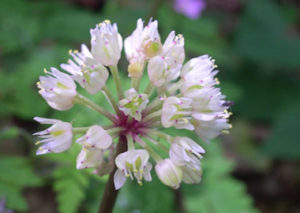
The Great Lakes Compact that keeps Great Lakes water in the Great Lakes basin is under threat in the legislature. Recent news on two emerging pollutants – pharmaceuticals and microfibers are also covered in this edition of News to Us. Finally, local actions including new National Water Trail designations and net zero energy use goals for houses of worship are steps in the right direction for natural resource protection.
Michigan’s Water Withdrawal Assessment Tool: A look back
An incredibly important piece of legislation protecting the Great Lakes is under threat by bills moving through the Michigan legislature. The Great Lakes Compact enacted in 2008, protects Great Lakes water from leaving the basin. If the legislation passes, it will be easier for large water users to withdraw water with minimal review leaving the resource vulnerable to depletion. It shifts the burden of proof to the State rather than the water user. With an understaffed, underfunded Department of Environmental Quality this shift is problematic. Bills to watch are House Bill 5638 and Senate Bills 652 and 653 (which have already passed in the House and are moving to a Senate vote).
New findings suggest serious threat to Great Lakes fish from, yes, Prozac
New research is finding the levels of pharmaceuticals being concentrated in fish is significantly higher than previously recorded. Anti-depressants in particular were found in the highest concentrations of all substances detected in fish tissue. Impacts of this include changes to both physical and behavioral attributes of fish. Treatment plants currently cannot remove these substances from waste water.
War on microfiber pollution starts in the laundry room
Lately we have been covering news on microplastic and microfiber pollution–an issue of growing concern for aquatic ecosystems. Innovators are developing solutions to address the problem. This article shares some emerging technologies that are helping reduce a major source of micro-fibers – laundry. HRWC recently received a grant to distribute Cora Balls to kick start these efforts in the Huron.
Water trails along Flint and Shiawassee rivers await designation
Applications have been submitted for two Michigan Rivers to be considered for National Water Trail designation. The Huron River received this designation in 2015. HRWC’s Elizabeth Riggs is quoted in this article discussing the community and economic implications of a water trail designation. Water trails tend to bring more users to a river which can create a connection to the resource motivating people to protect it.
Solar-powered chapel in Ann Arbor provides sustainable example for other houses of worship
Previous HRWC intern and volunteer Dieter Bouma was instrumental in helping Campus Chapel in Ann Arbor install solar panels – a move toward an environmentally friendly building. The panels resulted in net zero energy usage at the chapel in the first year. This is part of broader efforts that also include water efficiency. The chapel hopes to serve as a model for other houses of worship.



